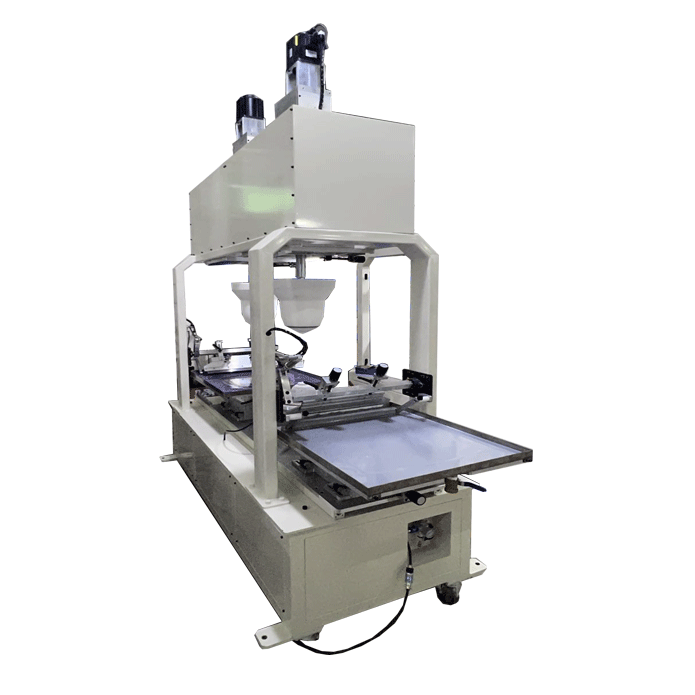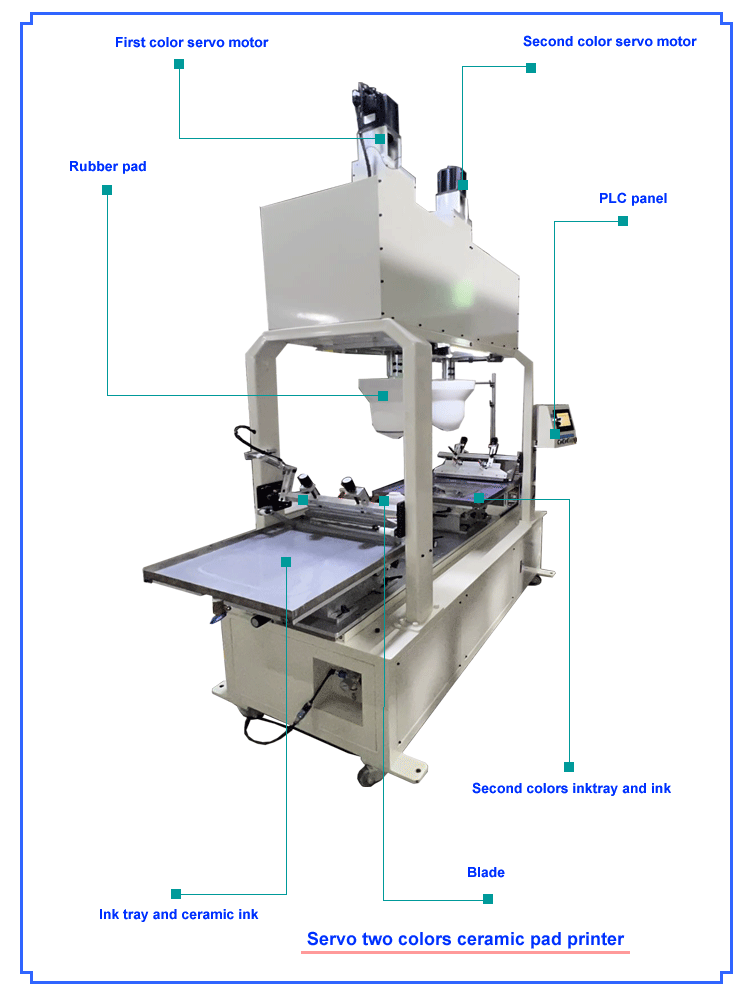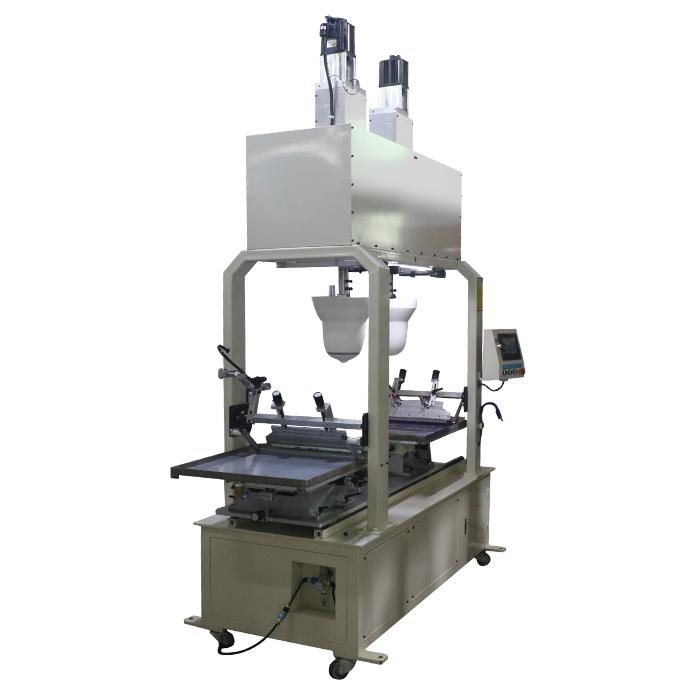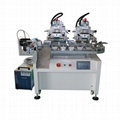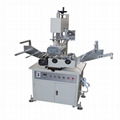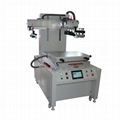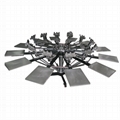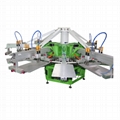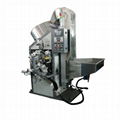| Model: | PKC-202S |
|---|---|
| Brand: | KC |
| Origin: | Made In China |
| Category: | Industrial Supplies / Plate Making & Printing Machine |
| Label: | ceramic pad printer , pad printing machine , servo pad printer |
| Price: |
US $9970
/ pic
|
| Min. Order: | 1 pic |
Product Description
1. Structural features
• Large ink tray: can hold enough ink and reduce the frequency of ink replenishment. Its size design is suitable for the needs of two-color printing, ensuring that there is enough supply area for both colors of ink, and the large ink tray helps to maintain the stability of the ink and reduce the phenomenon of ink drying and precipitation.
• Touch screen operation: The operation interface is intuitive and friendly, and various parameters can be easily set through the touch screen. For example, the printing speed, printing pressure, movement speed and stroke of the shuttle workbench can be accurately set. Fault diagnosis, parameter storage and call can also be performed on the touch screen, which can easily and quickly switch between different printing tasks.
• Two-color printing system: It has two independent printing devices for printing two colors. These two sets of devices can be independently adjusted in terms of position, pressure, ink supply, etc. to achieve accurate two-color overprinting. Usually there is a high-precision positioning system to ensure that the two-color patterns can be accurately superimposed on each other, presenting a beautiful two-color printing effect.
• Servo drive system: The servo motor is used to drive key components such as the pad printing head and the shuttle workbench. The advantage of servo drive is that it can provide high-precision position control and speed control. For the movement of the pad printing head, it can accurately control the position of the pad printing head's descent, ink dipping, printing and rise, ensuring the clarity and accuracy of the printed pattern. For the shuttle workbench, it can accurately control its fast and smooth movement between two stations.
• Shuttle workbench: The workbench is designed as a shuttle type, which can move quickly between two printing stations. This design can improve printing efficiency. When ceramic tableware such as bowls and basins on one station are being printed in one color, another station can perform preparation work, such as placing new tableware or cleaning printed tableware, to achieve alternating printing and effectively reduce downtime.
2. Working principle
• First, the shuttle workbench moves the ceramic tableware (bowls, basins, etc.) to the first printing station. The pad printing head descends under the servo drive, dips the ink of the first color, and then the pad printing head again accurately prints the dipped ink pattern on the ceramic tableware under the servo drive. Next, the shuttle workbench moves the tableware to the second printing station, and the pad printing head dips the second color of ink and prints it. The precise positioning system ensures that the two colors of the pattern are accurately overprinted to complete the two-color printing. During the whole process, the touch screen operation interface can monitor and adjust the parameters of each link in real time to ensure the printing quality.
3. Scope of application
• Mainly suitable for two-color pad printing of ceramic tableware, including ceramic products of various shapes and sizes such as bowls and basins. This pad printing machine can print exquisite patterns, trademarks, decorative patterns, etc., to meet the aesthetic requirements of ceramic tableware. It is widely used in tableware production plants, ceramic handicraft factories, etc. to enhance the added value of ceramic products.
4. Operation process
• Preparation: Add two colors of ink to the large-size ink tray respectively, and check whether the fluidity and viscosity of the ink meet the requirements. Turn on the equipment and check the operating status of each part of the equipment through the touch screen operation interface, such as whether the servo motor, pad printing head, shuttle workbench, etc. are working normally. Place the ceramic tableware (bowls, basins, etc.) at the starting position of the shuttle workbench.
• Parameter setting: Set the printing speed, printing pressure, pad head stroke, shuttle table movement speed and stroke and other parameters on the touch screen. Set and adjust the overprint accuracy of two-color printing according to the size, shape and printing pattern requirements of the ceramic tableware.
• Printing operation: Start the equipment, the shuttle table moves the ceramic tableware to the first printing station, and the pad head dips ink and prints the first color according to the set parameters. After completion, the shuttle table moves to the second printing station, the pad head dips ink and prints the second color to complete the two-color printing. During the printing process, the operator can observe the equipment operation status and printing effect in real time through the touch screen, and can adjust the parameters at any time if necessary.
• Completion and follow-up work: After printing is completed, remove the printed ceramic tableware from the shuttle table. Turn off the equipment, clean the ink tray and pad head, and do daily maintenance of the equipment.
5. Maintenance
• Ink tray maintenance: Clean the ink tray regularly to prevent ink from drying and impurities from mixing. When changing ink, thoroughly clean the ink tray to ensure the quality of the new ink.
• Touch screen maintenance: Keep the touch screen clean and avoid contamination such as oil and dust. If the touch screen fails, repair it according to the equipment maintenance manual or contact professional maintenance personnel.
• Printing system maintenance: Regularly check the wear of the pad printing head and replace the worn pad printing head in time. For the two sets of devices for two-color printing, check their accuracy separately, such as the accuracy of printing pressure and the stability of ink supply.
• Servo drive system maintenance: Keep the servo motor clean to prevent dust and foreign matter from entering. Regularly check the motor's connection wires and encoders to ensure normal signal transmission. If the servo drive fails, troubleshoot and repair it according to the fault code.
• Shuttle table maintenance: Check the wear of the guide rails and sliders of the table and lubricate them in time. Check whether the transmission mechanism of the table, such as belts and chains, is loose or worn to ensure that the table can shuttle quickly and smoothly.
|
Servo Two colors ceramic tableware pad printer |
||
|
Working table |
Fixed workbench or shuttle workbench |
|
|
ink try front-back stroke |
700mm |
|
|
Ink supply system |
Open-type inkwell system |
|
|
Plate type |
0.5mm Thin steel sheet |
|
| Rubber pad controlling | servo motor | |
|
Operation panel |
HMI screen |
|
|
Works supply |
|
|
|
Package list |
|
|
|
H.S.Code |
8443198000 |
|
|
Certicate |
CE |
|
| Application: | For some ceramic tableware with complex shapes, such as bowls, plates, dishes and other products, the traditional decoration method is to use the method of reposting with ceramic decals. This method is cumbersome and requires a large number of operators, so the cost is high. Pad printing has become a more popular practice in recent years. Due to the complex shape of tableware, in order to achieve perfect printing, the pad of the pad must be soft enough to press down to wrap the entire product. The softer the rubber head, the greater the deformation, so the size of the printing plate used by this pad printing machine is also large enough, which can reach 500*700mm, which is the largest type of pad printing machine at present. Considering the accuracy of pictures and texts, pre-deformation treatment should be used when making steel plates, and sometimes the steel plates need to be modified several times to achieve this. The pad printing machine for ceramic tableware currently has various forms such as single-color, two-color, three-color, four-color, five-color, etc. The worktable has a fixed pad printing machine, a two-color shuttle-type ceramic tableware pad printing machine, and two-color servo ceramic tableware. Pad printing machine, ceramic tableware pad printing machine with two-color and four-color turntables. |
|---|---|
| Advantages: | Ceramic pad printing machine is a special large-size pad printing machine specially designed for ceramic materials such as household tableware. Its maximum steel plate can reach 500*700mm. Considering the deformation of the printed product, users should do a good job of testing. At present, ceramic pad printing machines have single-color, two-color, three-color, and four-color. Considering the precision, most of the pressing down action of pad printing head has been controlled by servo motor. In addition to the single-color ceramic pad printer and the two-color ceramic pad printer, which basically use a splicing workbench, the turntable-type pad printer also uses a turntable-type workbench. In addition to the large size and high precision requirements of the ceramic pad printing machine, it is important to control the deformation prediction from the steel plate to the product, which requires the coordination of a special plate maker and printing master. Compared with ordinary pad printing, ceramic pad printing machine may not show advantages. If it is used to print ordinary products, the cost will be high, but as a mechanized printing process transitioned from ceramic decal paper, it is reducing labor costs. The cost has been greatly reduced. |
Member Information
| Dongguan KC Printing Machine Limited | |
|---|---|
| Country/Region: | Guang Dong - China |
| Business Nature: | Manufacturer |
| Phone: | 13592766499 |
| Contact: | Kelven Bai (General manager) |
| Last Online: | 16 Jan, 2025 |
Related Products of this Company
-
2 colors automatic UV Flat screen
US $17692
-
High speed hot selling Automatic Pen-rod
US $10294
-
High speed hot selling Zipper heat
US $11000
-
Servo Slide-table screen printer with
US $8254
-
Servo pad printer for plastics fake
US $7850
-
wooden Hydraulic hot stamping machine
US $12647
-
Octopus screen printing
US $4411
-
Plain/cylinder heat transfer machine
US $2647
-
Rotating hot selling octopus Full
US $25481
-
Tube-bottle cap automatic hot stamping
US $23622
